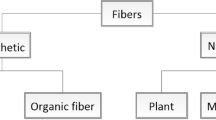Abstract
This paper introduces the composite tool electrodes made of electrical conductive powder-filled polyester resin matrix material, providing promise for the electrical discharge machining (EDM) process. The dendrite-shaped copper powder, graphite powder, and their mixture were used as conductive fillers. Six different types of composite electrodes, namely, plain copper-polyester, pressed copper-polyester, furnaced copper-polyester, plain copper-graphite-polyester, pressed copper-graphite-polyester, and furnaced copper-graphite-polyester were prepared. It is found experimentally that increasing v f improved workpiece material removal rate, tool wear rate, relative wear, and electrical conductivity of electrodes. The pressed copper-polyester electrodes were found to be promising in the ED finishing of workpieces at low machining current settings. The practical applicability of the proposed composite electrodes in the industry was also illustrated.
Similar content being viewed by others
References
Kechagias J, Iakovakis V, Katsanos M, Maropoulos S (2008) EDM electrode manufacture using rapid tooling: a review. J Mat Sci 43:2522–35
Berger MA, McCullough RL (1985) Characterization and analysis of the electrical properties of metal-filled polymer. Composite Sci Tech 22:81–106
Kroker R, Schneider M, Hamann K (1972) Polymer reaction on powder surfaces. Prog Org Coatings 1:23–44
Kim HK, Shi FG (2001) Electrical reliability of electrically conductive adhesive joints: dependence on curing condition and current density. Microelectron J 32:315–21
Nguyen TP, Ettaik H, Lefrant S (1990) Studies of the polyparaphenylene/aluminum interface. Synth Met 38:69–76
Vilcakova J, Saha P, Quadrat O (2002) Electrical conductivity of carbon fibers-polyester resin composites in the percolation threshold region. Eur Polym J 38:2343–2347
Jimenez MM, Elizalde MP, Gonzales M (2000) Electrochemical behavior of nickel-polyester composite electrodes. Electrochim Acta 45:4187–93
Shimada Y, Daoqiang L, Wong CP (2000) Electrical characterizations and considerations of electrically conductive adhesives (ECAs). Int Symp Adv Packag Mater 16:214–32
Puertolas JA, Oriol L, Calleja RD (1994) Dielectric and mechanical behaviour of a copper (II) metallomesogenic homopolymer. J Non-Cryst Solids 172(4):950–954
Mamunya YP, Davydenko VV, Pissis P, Lebedev EV (2002) Electrical and thermal conductivity of polymers filled with metal powders. Eur Polym J 38:1887–97
Roldughin VI, Vysotskii VV (2000) Percolation properties of metal-filled polymer films, structure and mechanisms of conductivity. Prog Org Coatings 39:81–100
Carmona F (1989) Conducting filled polymers. Physica A 157:461–9
Wycisk W, Pozniak R, Pasternak A (2002) Conductive polymer materials with low filler content. J Electrost 56:55–66
Bhattacharyya KS (1979) Electrical resistivity of PVC-Cu composites. Polymer 20:1166–7
Kalyon DM, Birinci E, Yazıcı R, Karuv B, Walsh S (2002) Electrical properties of composites as affected by the degree of mixedness of the conductive filler in the polymer matrix. Polymer Eng and Sci 42(7):42–7
El-Tantawy F, Kamada K, Ohnabe H (2002) Electrical properties and stability of epoxy reinforced carbon black composites. Mater Lett 57:242–51
Eubank PT, Bradley WL, Stucker BE, Bozkurt B, Norasetthekul S (1998) A new electrode material resistant to spark/arc erosion. NSF Des. and Manuf. Grantees Conf. Monterrey Mexico. 713–714
Arthur A, Dickens PM, Cobb RC (1996) Using rapid prototyping to produce electrical discharge machining electrodes. Rapid Prototyping J 2(1):4–12
Curodeau A, Richard M, Frohn L (2004) Mold Surface finishing with new EDM process in air with thermoplastic composite electrodes. J Mat Proc Tech 149:278–83
Khan DA, Hameedullah M (2011) Effect of tool polarity on the machining characteristics in electric discharge machining of silver steel and statistical modelling of the process. Int J Eng Sci Tech 3(6):5001–10
Author information
Authors and Affiliations
Corresponding author
Rights and permissions
About this article
Cite this article
Yaman, K., Çoğun, C. An experimental work on using conductive powder-filled polymer composite cast material as tool electrode in EDM. Int J Adv Manuf Technol 73, 535–543 (2014). https://doi.org/10.1007/s00170-014-5839-y
Received:
Accepted:
Published:
Issue Date:
DOI: https://doi.org/10.1007/s00170-014-5839-y




